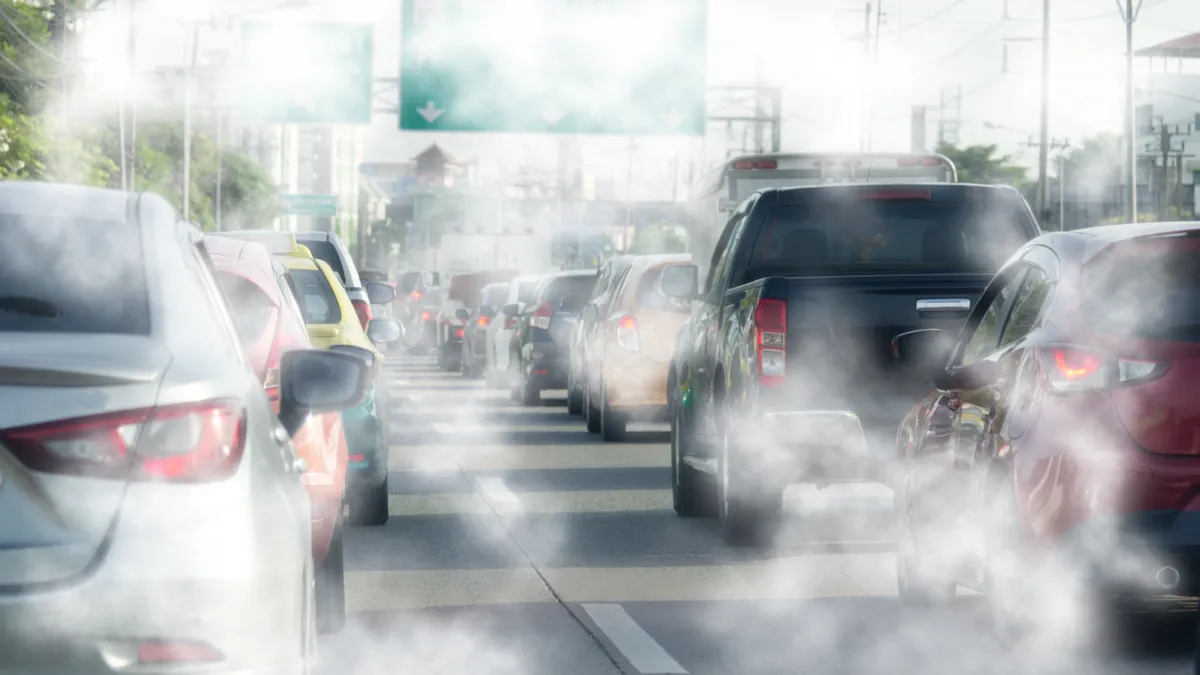Dive Brief:
- Combustion-engine vehicles more than 20 years old pollute almost three times as much as all 2004 and later vehicles combined in California, even though they account for less than a fifth of passenger vehicles in the state and just 12% of vehicle miles driven, according to a report released Tuesday by the Union of Concerned Scientists and nonprofit The Greenlining Institute.
- The report finds that communities with the highest exposure to pollution from older cars are more likely to be low-income and be home to higher percentages of Black and Latino residents, the report says.
- “The state must commit to retiring the dirtiest vehicles on the road,” said David Reichmuth, senior engineer for the UCS clean transportation program and one of the report’s authors, in an online post.
Dive Insight:
Although nearly one in five new cars sold in California last year were zero-emission vehicles, 4.8 million pre-2004 gas- and diesel-powered vehicles remain registered in the state. These vehicles are responsible for 73% of all nitrogen oxides exhaust from passenger vehicles and 64% of reactive organic gas emissions. These pollutants react to form fine particulate matter, PM2.5, which can penetrate deeply into the lungs, causing lung and cardiovascular diseases and cancer, the report states.
Latino Californians are exposed to 13% higher concentrations of PM2.5 than the state average, while Black residents are exposed to 11% higher concentrations. White residents, on average, breathe concentrations of PM2.5 that are 17% lower than the state average.
The report estimates that exposure to fine particulate matter from older vehicles accounts for between 97 and 421 premature deaths in California each year. The range is based on differing estimates for where and how much emissions occur.
California established regulations last year to ban sales of internal combustion engine vehicles beginning with the 2035 model year. The state also approved a wide-ranging sustainable mobility plan last year that includes consumer purchase incentives for low-income buyers of up to $15,000 for a new electric vehicle, and up to $19,500 if they also scrap an older vehicle. But Gov. Gavin Newsom vetoed legislation that would have given residents who do not own a vehicle $1,000 each year for five years, subject to income limitations.
The report recommends four actions California should take to help get older cars off the road.
- Adjust consumer incentive programs to encourage owners of older vehicles — especially among low-income and disadvantaged communities — to switch to electric vehicles or newer, more fuel-efficient vehicles.
- Conduct multilingual and culturally accessible outreach and education efforts in collaboration with trusted community-based organizations.
- Invest in transportation modes such as e-bikes, car sharing and public transportation to reduce vehicle miles traveled, and adopt land-use criteria that reduce the need to drive.
- Evaluate and adapt the state’s EV incentive programs to meet people’s needs, understanding that EVs are costly and may not be practical yet in rural areas. “Simply switching from older to newer vehicles can still result in meaningful emissions reductions under current economic conditions,” the report states.
“With sustained investment and targeted policies, California can protect its vulnerable communities from harmful air pollution, saving money and lives,” Reichmuth said in his online post.












